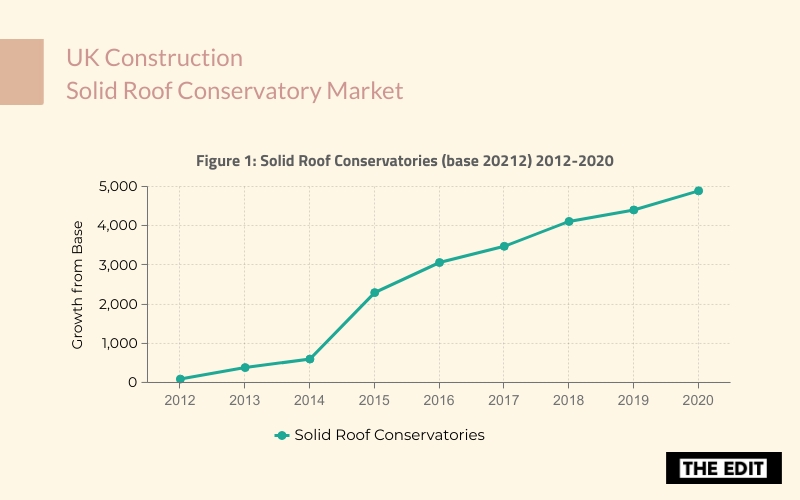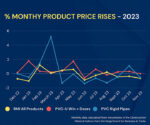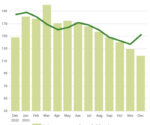‘Glazed-extensions and solid-roof conservatories are areas to focus on over the next few years’

Data scientists have been in popular demand over the last 6 months as analysts have battled with predictions and trends related to economic activity. The crystal ball we are all searching for unfortunately doesn’t exist, however we can make basic assumptions on market intelligence and available data.
The conservatory market is a very interesting subject for those interested in reading data and trends. A sector that has recently been battling against an outdated image has fought back hard and today offers attractive opportunities for installers and retailers. Its composition has changed significantly over the last decade. While today numbers of installations have reduced, average sale value and installation size have increased. Exact market data is hard to come by, and differs considerably, we can ascertain that in its heyday, the conservatory market did boast over 200,000 installs per year. Nowadays, it is more difficult to breakdown the exact number, as conservatories are often merged and categorised along with house extensions. In 2020 they are probably better described as being ‘glazed-extensions’ a move that was born out of the creation of the market for ‘orangeries’. Over a decade ago we saw the first real figures demonstrating the birth of ‘new’ orangery product. It represented a small fraction of the market, maybe around 3-4% in the early days. Today, figures vary, but on average it could account for up to 35-40% of the market. The problem is what is deemed an orangery? Any extension with a roof lantern and over 50% glazed side walls?
Glazed-extensions are a better classification for many of the installations installers are involving themselves with now. Many fall within the realm of permitted development rights and form a considerable proportion of this market segment. Figures for applications for permitted developments for large household extensions (not required and granted) make for interesting reading. Over the last five years there has been a downward trend. However this is flattening and it will be interesting to see the impact of the Covid-19 pandemic. During the same period, interest in roof lanterns has skyrocketed as has demand for solid roof conservatoires. The pandemic has caused great uncertainty and this has had a significant impact on consumer spending habits. News that holiday firms won’t be refunding monies spend on cancelled holidays is fuelling the re-direction of consumer spending to home improvement projects. Evidence of this is demonstrated by simple Google trends related to increases in enquiries for areas such as conservatories, roof-lanterns, double-glazing and extensions. Comparisons to trends looking at interest for double-glazed reinforce the positive signs for the fenestration sector.
It is important we capitalise on these trends. Rob Potter, Managing Director of Trojan Developments has always had a keen eye on market intelligence and data. He told Windows Active: “We have always believed it is essential to focus on products that are in tune with market trends. Home extensions and conservatories represented a significant part of our business. Over the last 5 years we have adapted our offering and have moved away from traditional Victorian and Edwardian conservatories. Orangeries were are main focus from 2016 to 2019, and now we are seeing increased demand for solid roof conservatories and brick extensions with roof lanterns. The solid roof growth is interesting as this is a mix of new complete conservatories based on Victorian shaped constructions and roof-only replacements.” Keeping an eye on trends and internet searches are a good way to ensure your business is targeting the right areas of consumer demand. Signs are, glazed-extensions and solid-roof conservatories could be the areas to focus on over the next few years.”











